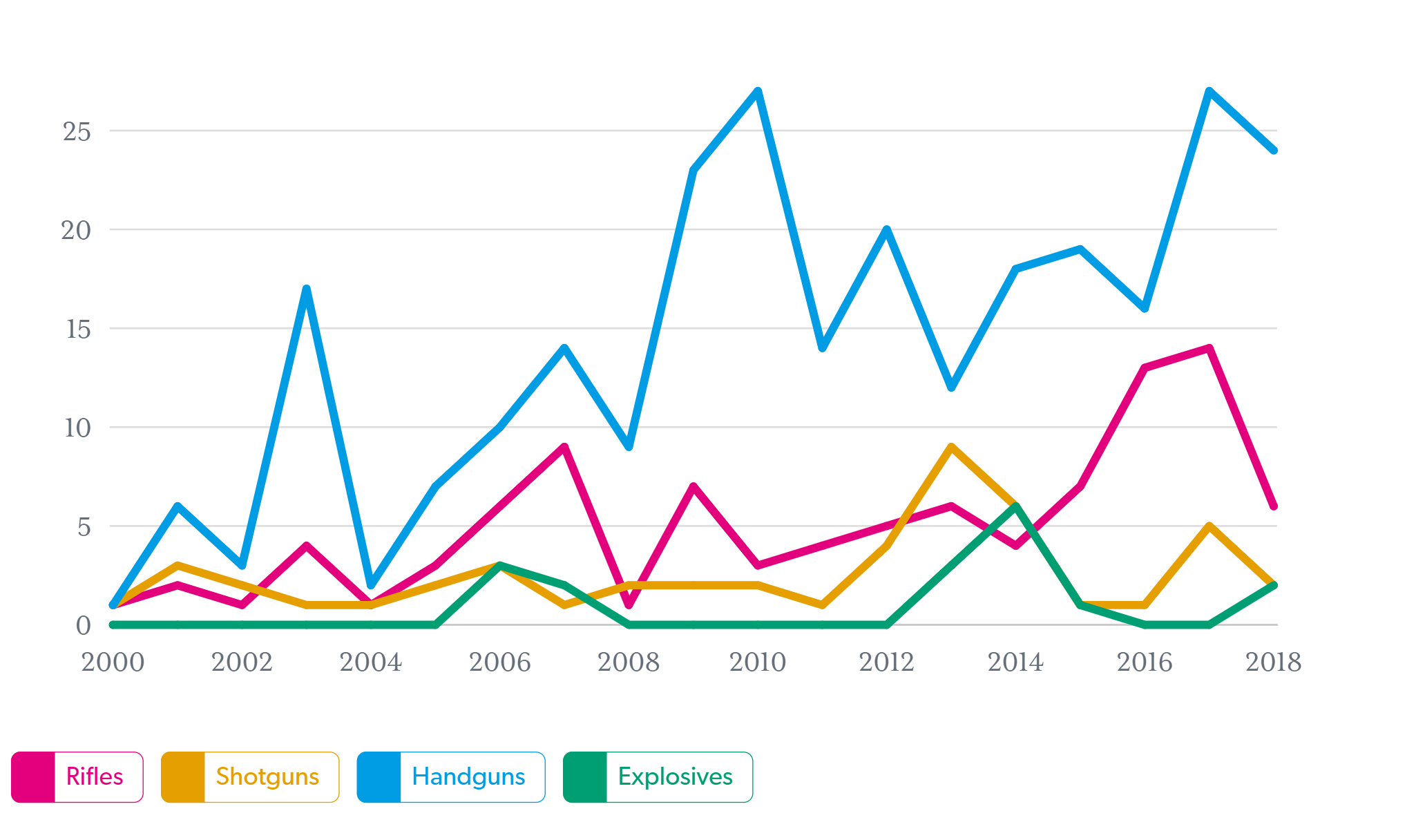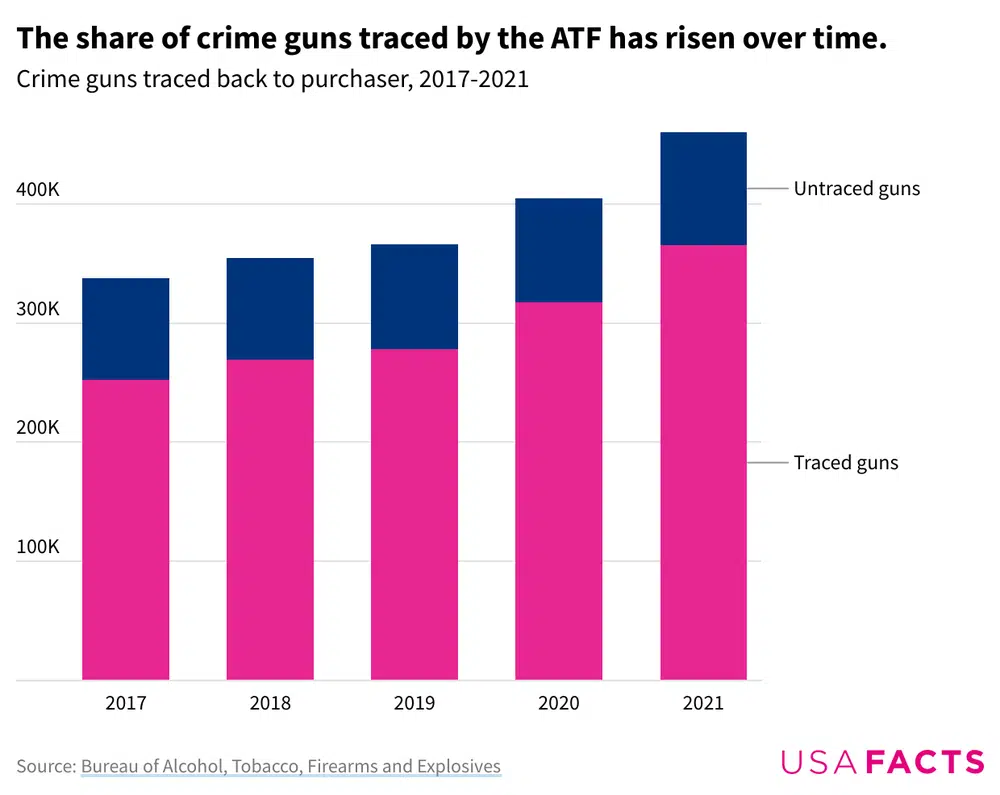Crime
The federal data available on active shooter incidents, mass killings and domestic terrorism

Was a gun used in a crime bought legally? Who bought the gun — and where was it bought?
These are questions the Bureau of Alcohol, Tobacco, Firearms and Explosives (ATF) seeks to answer through its National Tracing Center, the nation’s only gun tracing facility. Every year, the ATF fields thousands of trace requests to help domestic and international law enforcement investigate gun crimes.
In February 2023, the ATF issued a report on guns used in crimes, using 2017–2021 National Tracing Center data. It is the first ATF study on criminal gun trafficking in more than two decades.
Gun tracing means tracking a gun’s journey from manufacturer to crime scene. When a law enforcement agency finds a gun used in a crime, it submits a trace request to the ATF to learn more about the gun’s ownership history.
Gun trace requests from law enforcement agencies increased from 338,000 in 2017 to 460,000 in 2021, or 36%. The requests reflect the increasing availability of manufactured, privately made, and imported firearms.
In 2017, the ATF traced 75% of submitted crime guns back to the purchaser. By 2021, it traced 79%.

Gun trace rates varied widely by state. While California and Texas submitted the highest number of gun trace requests (231,784 and 177,786, respectively), California’s rate was 62% while Texas had a trace rate of 83%. Hawaii had the nation’s lowest rate, 60%, but also submitted the lowest number of trace requests: 1,194.
At 85%, Wisconsin traced the highest share of crime guns back to their purchasers.
New Hampshire, Missouri, Florida, Mississippi, and North Carolina produced more than half of the licensed firearms made in the US in 2019. Four of those states had a crime gun trace rate of 80% or higher; New Hampshire’s rate was 76%.
Attorney General Merrick Garland directed the ATF to compile and release a report on criminal gun data in April 2021.
Tracing guns can help law enforcement identify suspects in a criminal investigation, potential arms traffickers, and regional patterns in the movement of guns used in crimes. Findings from this report will help law enforcement agents, prosecutors, and policymakers combat criminal gun trafficking.
Read about ghost guns and get the data directly in your inbox by signing up for our weekly newsletter.